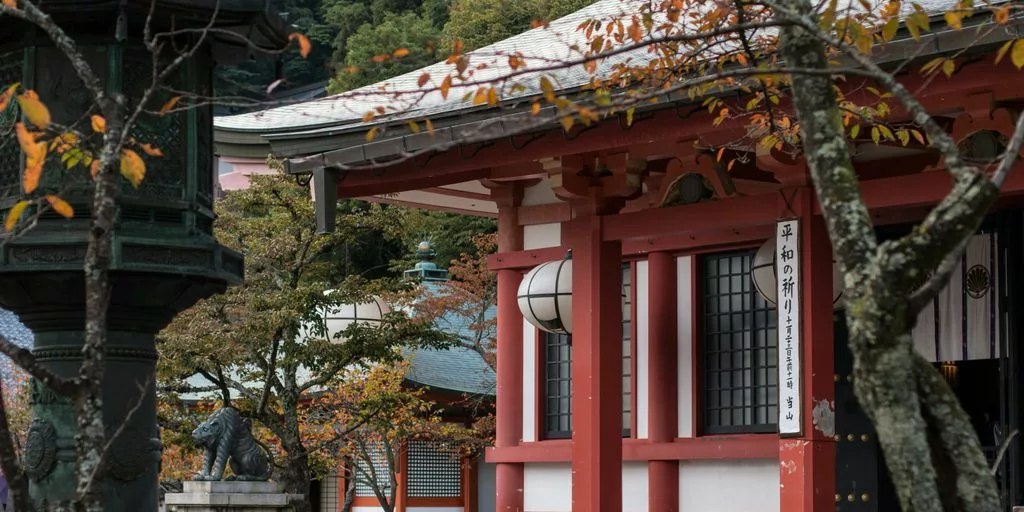
Traditional Tea Houses and Tea Ceremonies

History of Tea Culture in Kyoto
Kyoto’s tea culture dates back over 500 years, making it a cornerstone of the city’s rich heritage. The tradition of tea ceremonies, known as chanoyu, is deeply rooted in Zen Buddhism and has been meticulously preserved through generations. Kyoto’s tea gardens, or chaniwa, are designed specifically for hosting these ceremonies, creating a serene and contemplative atmosphere.
Experiencing a Tea Ceremony
Participating in a tea ceremony in Kyoto is a must-do experience. The ceremony is traditionally held in a tatami room, where every movement is deliberate and meaningful. Visitors can enjoy matcha, a powdered green tea, along with wagashi, a traditional Japanese confectionery. For a more immersive experience, some venues offer the chance to wear a kimono during the ceremony.
If you want to learn how to experience a traditional tea ceremony in Kyoto, consider visiting a private house near Kinkaku-ji Temple. It’s a great place for a casual introduction to the tea ceremony.
Famous Tea Houses to Visit
- Camellia: With locations in East and West Kyoto, Camellia offers an authentic tea ceremony experience in English. The Garden Tea Room is an oasis of calm, perfect for savoring Uji matcha tea.
- Tea Ceremony Koto: Located very close to Kinkaku-ji Temple, this venue offers a traditional tea ceremony in a private house. It’s an excellent spot to enjoy a tea ceremony after touring the Golden Pavilion.
- Ju-An: The only Zen-dedicated tea room open to the public, Ju-An provides a unique opportunity to learn and perform the tea ceremony surrounded by a beautiful garden.
Kyoto’s Historic Temples and Shrines
Kyoto’s spiritual landscape is adorned with over 1,600 temples and shrines, each offering a unique glimpse into Japan’s rich cultural history. From architectural marvels to compelling stories, these sites have stood the test of time.
Kinkaku-ji: The Golden Pavilion
Kinkaku-ji, also known as the Golden Pavilion, is a Zen Buddhist temple covered in gold leaf. Its reflection in the surrounding pond creates a mesmerizing view. This iconic site is a must-visit for anyone exploring Kyoto’s historic landmarks.
Fushimi Inari Shrine
Fushimi Inari Shrine is famous for its thousands of vermilion torii gates that form a path up the sacred Mount Inari. This shrine is dedicated to Inari, the Shinto god of rice, and offers a spiritual journey through its winding trails.
Ryoan-ji: The Zen Rock Garden
Ryoan-ji is renowned for its Zen rock garden, a masterpiece of minimalism and meditation. The garden’s simple yet profound design invites visitors to reflect and find peace amidst the carefully arranged rocks and raked gravel.
Kyoto’s most important shrines and temples, including Kinkaku-ji, Fushimi Inari Shrine, and Ryoan-ji, offer a captivating journey through time and spirituality.
Seasonal Festivals and Celebrations
Kyoto’s Gion Matsuri, held every July, is one of Japan’s most famous festivals. This month-long celebration features elaborate floats, traditional performances, and lively street parades. The festival’s highlight is the grand procession of floats, known as Yamaboko Junko, which takes place on July 17th and 24th. Visitors can also enjoy various food stalls, games, and cultural exhibitions throughout the festival.
Spring in Kyoto is synonymous with cherry blossom viewing, or hanami. The city transforms into a sea of pink and white as cherry blossoms bloom, creating a breathtaking backdrop for picnics and strolls. Popular hanami spots include Maruyama Park, the Philosopher’s Path, and the Kamo River. Don’t miss the evening illuminations, which add a magical touch to the cherry blossom experience.
Autumn in Kyoto is a time of vibrant colors and stunning scenery. The Autumn Leaves Festival celebrates the changing foliage, particularly in temple gardens and along mountain trails. Tofuku-ji Temple and the Philosopher’s Path are among the best places to witness the fiery hues of autumn. The festival often includes special events, such as tea ceremonies and traditional music performances, set against the backdrop of the stunning autumn landscape.
Exquisite Kyoto Cuisine
Kaiseki: Traditional Multi-Course Meal
Kyoto’s culinary scene is a paradise for food enthusiasts, offering a symphony of flavors that celebrate both tradition and innovation. Kaiseki, a traditional multi-course meal, is the epitome of this culinary artistry. Each dish is meticulously curated to highlight seasonal ingredients, creating a dining experience that is both visually stunning and delicious. Visitors can enjoy kaiseki meals in serene settings, often with a scenic garden view, making it a must-try for anyone visiting Kyoto.
Street Food Delights
For those who prefer a more casual dining experience, Kyoto’s street food scene is not to be missed. The vibrant Nishiki Market is a food lover’s paradise, offering a wide array of fresh produce, street foods, and cultural delicacies. From savory tofu dishes to delicate wagashi sweets, the market provides a taste of Kyoto’s rich culinary heritage. Don’t forget to try the iconic Uji matcha desserts, a local specialty that is both delicious and Instagram-worthy.
Famous Kyoto Restaurants
Kyoto is home to numerous renowned restaurants that offer unique dining experiences. Nouvelle Epoque, for instance, fuses Kyoto’s charm with traditional French cuisine, creating a dining experience that is both sophisticated and memorable. Whether you’re indulging in an omakase course that showcases authentic Kyoto-style cuisine or enjoying a tea ceremony with exclusive treats, Kyoto’s restaurants offer something for every palate.
Kyoto’s culinary offerings reflect its rich cultural heritage, making it a must-visit destination for food lovers.
Traditional Arts and Crafts
Kyoto is a treasure trove for kimono enthusiasts. The city is renowned for its exquisite kimono craftsmanship, with artisans meticulously handcrafting each piece. Visitors can even participate in traditional craft experiences, where they can try on these beautiful garments and learn about the intricate process of kimono-making.
Kyoto’s ceramics are celebrated for their delicate beauty and exceptional quality. The city’s pottery tradition dates back to the 16th century, and today, it remains a hub for ceramic artistry. Explore the Kiyomizu Pottery Area, where you can visit numerous pottery studios and even try your hand at creating your own masterpiece.
Ikebana, the Japanese art of flower arrangement, is another traditional craft that thrives in Kyoto. This art form emphasizes harmony, balance, and simplicity. Many workshops in Kyoto offer classes where you can learn the principles of Ikebana and create your own stunning floral arrangements.
Kyoto has been one of the most important centers of traditional Japanese arts and crafts for centuries, and the gallery’s concept is to offer the beauty of these timeless traditions to the world.
Scenic Gardens and Natural Beauty
Arashiyama Bamboo Grove
Step into the enchanting world of the Arashiyama Bamboo Grove, where towering bamboo stalks create a mesmerizing canopy. This natural wonder is a must-visit for anyone looking to immerse themselves in the serene beauty of Kyoto. As you wander through the grove, you’ll feel a sense of tranquility that’s hard to find elsewhere.
Philosopher’s Path
The Philosopher’s Path offers a picturesque stroll along a cherry-tree-lined canal. This scenic route is especially breathtaking during the cherry blossom season, making it a favorite spot for both locals and tourists. The path is named after a famous philosopher who used to walk here daily, contemplating life’s mysteries.
Kyoto Botanical Gardens
Explore the sprawling Kyoto Botanical Gardens, a haven for plant lovers and nature enthusiasts. The gardens offer a diverse collection of flora, from seasonal flowers to ancient trees. It’s one of the loveliest spots in the city, perfect for a leisurely day out.
Additionally, seeking out secluded spots for quiet contemplation will enhance your appreciation for the gardens’ harmony and design. Participating in guided tours or attending workshops will provide valuable insights into the gardens’ history, design principles, and cultural significance, enriching your overall experience.
Exploring Kyoto’s Historic Districts
Gion: The Geisha District
Gion is Kyoto’s most famous geisha district, known for its traditional wooden machiya houses and exclusive teahouses. As you stroll through the narrow streets, you might catch a glimpse of a geisha or maiko heading to an appointment. The area is also home to Yasaka Shrine, a must-visit for anyone exploring Gion.
Higashiyama: The Historic Heart of Kyoto
Higashiyama is a treasure trove of Kyoto’s history, featuring winding cobbled streets and preserved wooden machiya houses. Key attractions include the iconic Kiyomizu-dera Temple and the charming pedestrian-only streets of Ninen-zaka and Sannen-zaka. Don’t miss out on trying yatsuhashi, a local cinnamon-flavored delicacy.
Nishijin: The Textile District
Nishijin is renowned for its traditional textile industry, particularly the exquisite Nishijin-ori silk. Visitors can explore various workshops and even try their hand at weaving. The district also offers a glimpse into Kyoto’s rich cultural heritage through its beautifully preserved architecture and artisan boutiques.
Conclusion
Kyoto is a city that seamlessly blends the old with the new, offering a unique glimpse into Japan’s rich cultural heritage. From its ancient temples and traditional tea houses to its vibrant festivals and exquisite cuisine, Kyoto invites travelers to immerse themselves in a world where history and modernity coexist harmoniously. Whether you’re wandering through serene gardens, exploring historic landmarks, or indulging in local culinary delights, Kyoto promises an unforgettable journey filled with beauty, tradition, and timeless charm. As you leave this enchanting city, you’ll carry with you not just memories, but a deeper appreciation for the artistry and cultural richness that define Kyoto.
Frequently Asked Questions
What is the best time of year to visit Kyoto?
The best times to visit Kyoto are during the spring (March to May) for cherry blossoms and autumn (October to November) for the stunning fall foliage.
How do I experience a traditional tea ceremony in Kyoto?
You can experience a traditional tea ceremony in various tea houses throughout Kyoto. Some famous ones include Camellia Tea Ceremony and En Tea House.
What are the must-see temples and shrines in Kyoto?
Some must-see temples and shrines in Kyoto include Kinkaku-ji (The Golden Pavilion), Fushimi Inari Shrine, and Ryoan-ji.
What local foods should I try in Kyoto?
When in Kyoto, don’t miss out on trying Kaiseki (traditional multi-course meal), Yudofu (tofu hot pot), and various street foods like Taiyaki and Takoyaki.
Are there any cultural festivals in Kyoto that I should attend?
Yes, Kyoto hosts several cultural festivals such as Gion Matsuri in July, Cherry Blossom Viewing in spring, and the Autumn Leaves Festival in fall.
Where can I buy traditional Kyoto crafts?
You can buy traditional Kyoto crafts like pottery, ceramics, and kimonos in districts like Gion, Higashiyama, and Nishijin.






